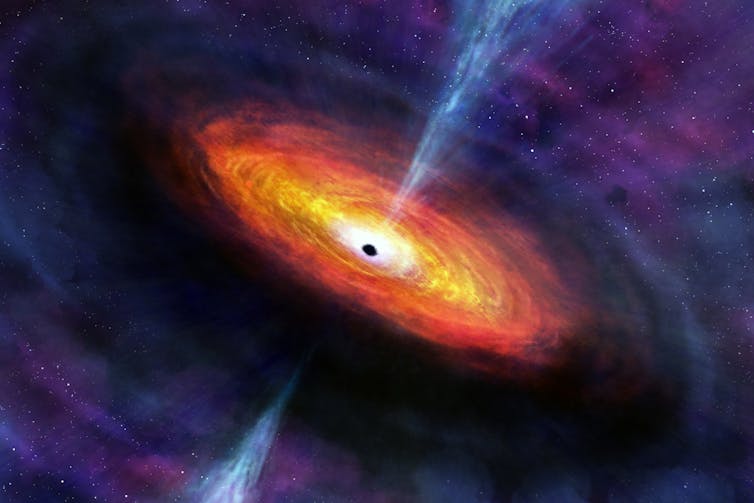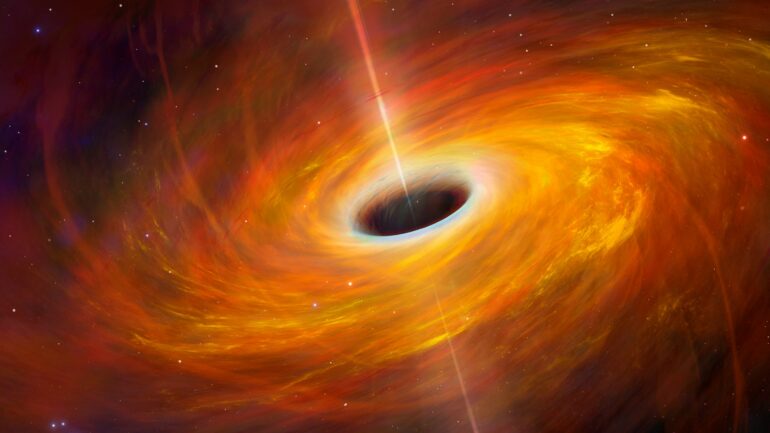Black holes are remarkable astronomical objects with gravity so strong that nothing, not even light, can escape them. The most gigantic ones, known as “supermassive” black holes, can weigh millions to billions times the mass of the Sun.
These giants usually live in the centers of galaxies. Our own galaxy, the Milky Way, contains a supermassive black hole in its heart as well.
So, how do these supermassive black holes become super massive? To answer this question, our team of astrophysicists looked back in time across the universe’s 13.8 billion-year history to track how supermassive black holes have grown from the early days to today.
We constructed a model of the overall growth history of supermassive black holes spanning the past 12 billion years.
How do supermassive black holes grow?
Supermassive black holes grow primarily in two ways. They can consume gas from their host galaxies in a process called accretion, and they can also merge with each other when two galaxies collide.

An artist’s illustration of an accreting supermassive black hole. The central black hole is black, while its surrounding gas heats up and shines to produce light.
Nahks Tr’Ehnl (Penn State)
When supermassive black holes consume gas, they almost always emit strong X-rays, a type of high-energy light invisible to the naked eye. You’ve probably heard of X-rays at the dentist, where they are sometimes used to examine your teeth. The X-rays used by astronomers generally have lower energies than medical X-rays.
So how can any light, even invisible X-rays, escape from black holes? Strictly speaking, the light is not coming from the black holes themselves, but from the gas just outside them. When gas gets pulled toward a black hole, it heats up and shines to produce light, like X-rays. The more gas a supermassive black hole consumes, the more X-rays it will produce.
Thanks to the data accumulated over more than 20 years from three of the most powerful X-ray facilities ever launched into space – Chandra, XMM-Newton and eROSITA – astronomers can capture X-rays from a large number of accreting supermassive black holes in the universe.
This data allows our research team to estimate how fast supermassive black holes grow by consuming gas. On average, a supermassive black hole can consume enough gas to amount to about the mass of the Sun each year, with the exact value depending upon various factors.
For example, the data shows that a black hole’s growth rate, averaged over millions of years, is strongly connected to the mass of all the stars in its host galaxy.
How often do supermassive black holes merge?
Besides feeding on gas, supermassive black holes can also grow by merging with each other to form a single, more massive black hole when galaxies collide.
Supercomputer cosmological simulations can predict about how often these events happen. These simulations aim to model how the universe grows and…



